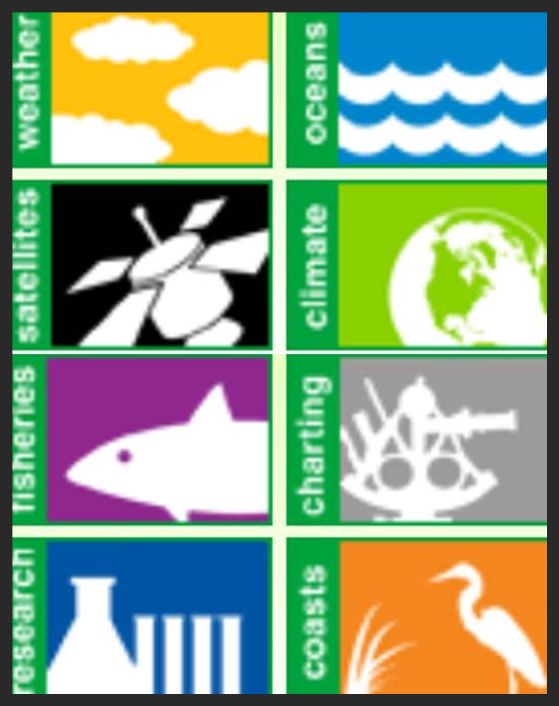State Success Story
Nearly nine million people live, work, and relax along the shores of Long Island Sound. The Sound contributes approximately $8 billion annually to the regional economy through commercial and recreational activities. However, there is clear evidence that this estuarine environment is changing. Despite significant progress in reducing wastewater pollution, Long Island Sound remains stressed by increasing population and development. Sea level and water temperatures in Long Island Sound are rising at rates higher than the global average. In addition, coastal waters are becoming more acidic. These conditions may cause long-term alteration of the Long Island Sound ecosystem, which is directly linked to the well-being of coastal communities.
To read more, click here.
|

At the Agencies
The Bureau of Ocean Energy Management (BOEM) and the Massachusetts Clean Energy Center (MassCEC) announce the results of two new multi-year marine wildlife survey efforts that focus on collecting baseline biological occurrence and distribution data for whale, turtle, and bird species within the Wind Energy Areas (WEAs) offshore Massachusetts and Rhode Island. The wildlife surveys found that the Massachusetts and Rhode Island WEAs avoid the high concentrations of protected species of whales, turtles and seabirds in these areas. "BOEM remains deeply committed to ensuring that renewable energy development on the Outer Continental Shelf is done in a safe and environmentally responsible manner," said BOEM Director Abigail Ross Hopper. "The survey results confirm that responsible commercial wind development activities in these WEAs will not adversely affect protected species populations."
Read more
The Bureau of Ocean Energy Management (BOEM) is pleased to announce the completion of several major initiatives undertaken with Hurricane Sandy emergency funding. They include updated maps and consolidated databases related to offshore sediment resources, made possible through cooperative agreements between BOEM and 13 Atlantic states from Florida to Maine in 2014.
Read more
The NOAA Coral Reef Conservation program is awarding more than $9.3 million in grants and cooperative agreements to support conservation projects and studies to benefit coral reef ecosystem management in seven U.S. states and territories, the Caribbean and Micronesia. Recipients will provide nearly $6 million in additional support.
Read more
NOAA's National Centers for Coastal Ocean Science will award $10.44 million over the next five years for 10 projects to address sea level rise, hypoxia and harmful algal blooms (HABs).
Read more
|

In the News
Rising sea surface temperatures are causing marine-related tropical diseases and harmful algal blooms to spread towards the poles, a shift that is impacting human health, according to a chapter from a new report by the International Union for Conservation of Nature (IUCN) authored by professors from The University of Texas at Austin and Plymouth University.
Read more
As communities across the Southeast United States and the Caribbean count the cost of flood and wind damage during Hurricane Matthew, a pioneering study led by scientists at UC Santa Cruz, Coastal Wetlands and Flood Damage Reduction, has quantified how much protection natural coastal habitats provide during hurricanes. Using the latest modeling techniques, scientists from the conservation, engineering, and insurance sectors studied the impact of Hurricane Sandy in the Northeast United States in 2012, when New York and New Jersey were badly hit by storm surges. The study found more than $625 million in property damages were prevented during this natural catastrophe by coastal wetlands along the Northeast coast.
Read more
|

In the States and Regions
East Coast
Port Canaveral is seeking $7.5 million in assistance from the Federal Emergency Management Agency to repair damage to port facilities caused by Hurricane Matthew earlier this month.
Read more
The construction for Phase II of the Hurricane and Storm Damage Reduction Project in Port Monmouth is about to be launched. On Oct. 20, Congressman Frank Pallone Jr. (D-Monmouth, Middlesex) joined Col. David A. Caldwell, Commander of the New York District of the U.S. Army Corps of Engineers, Bob Martin, Commissioner of the Department of Environmental Protection (DEP) and Middletown Mayor Gerard Scharfenberger in a ceremony to announce that Phase II is ready to start.
Read more
Gulf Coast
Louisiana expects to have at least $10.7 billion for coastal master plan projects during the first 15 years of the 2017 rewrite of the plan, state officials said Tuesday (Oct. 25). But the state must still clear a variety of financial hurdles to be able to turn that money into projects, and must identify ways to pay the remainder of the 50 year plan's expected $50 billion price tag.
Read more
As coastal development along the Gulf Coast continues to expand, tidal saline wetlands could have difficulty adjusting to rising sea levels.
Tidal saline wetlands along the U.S. Gulf of Mexico coast, such as mangrove forests, salt marshes, and salt flats, face survival challenges as sea levels rise rapidly and development along coastlines continues to grow. But, a recently published U.S. Geological Survey study shows there is hope for some of these at-risk Gulf coast wetlands.
Read more
West Coast and Pacific Islands
In an effort to preserve and protect more than
300 miles of shoreline along rivers in Southeast Washington, three counties worked with the city of Clarkston and the town of Starbuck to update their
shoreline program. Asotin, Columbia and Garfield counties, along with Clarkston and Starbuck, participated in a regional planning process to update their shoreline program. The group developed one program that applies throughout Southeast Washington with specific detail to address individual needs of Clarkston and Starbuck. They then submitted their program to the Washington Department of Ecology for review and approval.
Read more
Great Lakes
Researchers who work in wetlands in Michigan are taking a new approach to invasive plants. Instead of removing plants like phragmites and switchgrass, they're harvesting them. They say these plants are a threat to biodiversity, but they can benefit farmers and even power homes.
Read more
A mix of industry, tribal, regulatory and environmental stakeholders have released a
white paper listing a dozen recommendations for the future of a federal Great Lakes cleanup program. Suggestions include continuing work to clean up areas of concern under the Great Lakes Restoration Initiative, as well as creating a more stable, minimum level of funding. More than $2 billion has been spent cleaning up toxic hotspots along the Great Lakes over the last six years. A white paper produced by Northland College states stakeholders believe it needs a long-term funding commitment.
Read more
|
Announcements & More
Restore America's Estuaries 2016 Summit
SAVE THE DATE
for the
8th National Summit on Coastal and Estuarine Restoration in New Orleans - December 10 -15 , 2016. For more information about the summit, please click here. To register, please visit: https://rae-tcs-summit.org/registration/add
Seven of our National Marine Sanctuaries are looking to fill seats on their advisory councils.
These are community - based groups whose insight guides management decisions and community relations for each sanctuary site. Candidates are selected based on expertise and experience in relation to the particular role for which they are applying, as well as relevant community or professional affiliations. More information is available here as well as complete list of available positions. Applications will be accepted through Wednesday, Nov. 30, 2016.
OneNOAA Science Seminars, 2016
Date & Time: November 3, 2016 1:00 pm - 2:00 pm ET
Title: Facilitating Collaborative Public Decisions: A video-based training tool
Date & Time: November 10, 2016 1:00 pm - 2:00 pm ET
Date & Time: November 17, 2016 12:00 pm - 1:00 pm ET
Date & Time: November 30, 2016 12:00 pm - 1:00 pm ET
Seminars are open to the public. For remote access, location, abstracts and more, visit the OneNOAA Science Seminar Calendar at:
http://www.nodc.noaa.gov/seminars/
Seminars are posted in Eastern Time and subject to changes without notice; please check the web page for the latest seminar updates.
Events & Webinars
November 2 - 3, 2016
November 10, 2016
December 7, 2016
December 10 -15, 2016
January 25 - 26, 2017
March 14 - 16, 2017
May 9 - 11, 2017
May 31- June 2, 2017
|
|
|
|
|
|